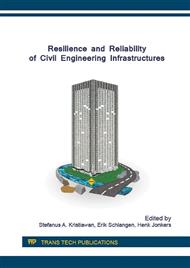p.202
p.208
p.214
p.220
p.226
p.233
p.240
p.246
p.252
An Artificial Neural Networks Model for Compressive Strength of Self-Compacting Concrete
Abstract:
An experimental program was undertaken to evaluate the compressive strength of self-compacting concrete using commercial mathematic program. Sample variation was monitored using an experimental cylinder of concrete measuring 150 mm in diameter and 300 mm in height. This research examined various mixture designs in the laboratory tests with the goal of creating mixtures with desirable flow specification that did not require additional vibration yet provided adequate compressive strength. After 28 days, compressive strength of cylinder concrete determination, a model of Artificial Neural Networks (ANNs) was designed for this research and the results were obtained in this model of ANN. Both experimental tests and mix design program data was analyzed with statistical packet software. The result of statistical analysis has been done in 98.54 percent of confidence interval. It has been seen that the ANN can be used as reliable modelling method for similar experiment.
Info:
Periodical:
Pages:
226-230
Citation:
Online since:
July 2016
Authors:
Price:
Сopyright:
© 2016 Trans Tech Publications Ltd. All Rights Reserved
Share:
Citation:


